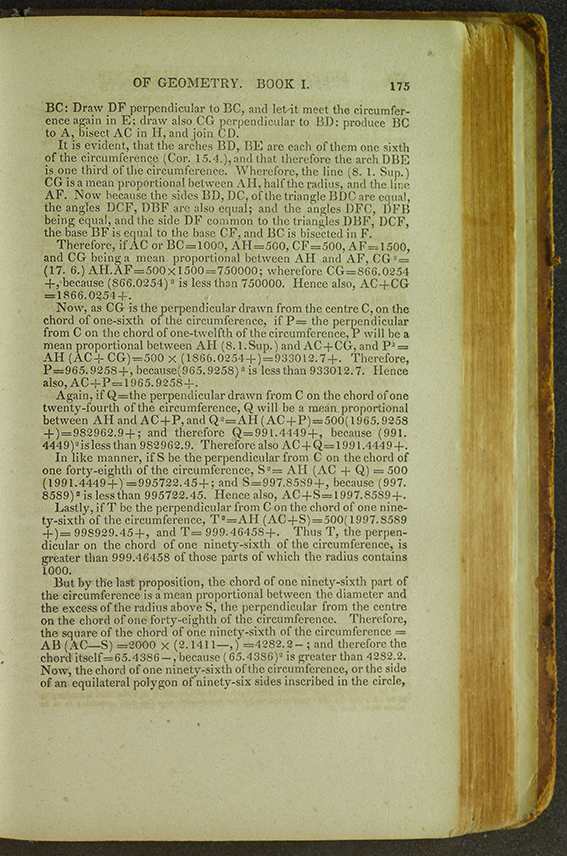- About MAA
- Membership
- MAA Publications
- Periodicals
- Blogs
- MAA Book Series
- MAA Press (an imprint of the AMS)
- MAA Notes
- MAA Reviews
- Mathematical Communication
- Information for Libraries
- Author Resources
- Advertise with MAA
- Meetings
- Competitions
- Programs
- Communities
- MAA Sections
- SIGMAA
- MAA Connect
- Students
- MAA Awards
- Awards Booklets
- Writing Awards
- Teaching Awards
- Service Awards
- Research Awards
- Lecture Awards
- Putnam Competition Individual and Team Winners
- D. E. Shaw Group AMC 8 Awards & Certificates
- Maryam Mirzakhani AMC 10 A Awards & Certificates
- Two Sigma AMC 10 B Awards & Certificates
- Jane Street AMC 12 A Awards & Certificates
- Akamai AMC 12 B Awards & Certificates
- High School Teachers
- News
You are here
Mathematical Treasure: Playfair on Teaching Geometry

John Playfair (1748-1819), a mathematician and professor at the University of Edinburgh, was known as an excellent teacher. His concern with mathematics learning extended to his writing. Playfair published his Elements of Geometry in 1795 with the idea of making Euclid's Elements more user-friendly, and indeed it helped reform the teaching of geometry in Great Britain. Firstly, Playfair helped to simplify the exposition of proofs by introducing algebraic notation. Secondly, he provided an alternative to Euclid’s Fifth Postulate, or Parallel Postulate, which had been the subject of much contention. Playfair's alternative parallel postulate, known as “Playfair’s Axiom,” states:
Playfair's Axiom: Given a line and a point not on the line, it is possible to draw exactly one line through the point parallel to the given line.
Although it received criticism from traditionalists, Playfair’s Elements of Geometry was very popular, running to six editions. The title page shown above is from the 1832 American edition.

These sample pages from Playfair’s Elements of Geometry are shown separately below. Playfair established here a theorem of Archimedes.


The Special Collections staff at the Linderman Library of Lehigh University in Bethlehem, Pennsylvania, is pleased to cooperate with the Mathematical Association of America to exhibit this and other items from the Library’s holdings in Mathematical Treasures. In particular, Convergence would like to thank Lois Fischer Black, Curator, Special Collections, and Ilhan Citak, Archives and Special Collections Librarian, for their kind assistance in helping to make this display possible. You may use these images in your classroom; all other uses require permission from the Special Collections staff, Linderman Library, Lehigh University.
Frank J. Swetz (The Pennsylvania State University), "Mathematical Treasure: Playfair on Teaching Geometry," Convergence (June 2014)




